In today’s world, beauty standards often emphasize a slim, balanced face with a defined V-line chin. However, not everyone is born with naturally perfect facial proportions. That’s why mandibular angle reduction surgery has become increasingly popular as an effective way to refine facial contours and achieve a more harmonious look. Let’s explore this cosmetic procedure in detail below!
What is mandibular angle reduction?
Mandibular angle reduction surgery is a cosmetic procedure designed to reshape the lower jawbone for a slimmer and more defined facial contour. The technique involves refining or shaving the prominent jawbone using advanced technology, helping the face appear more balanced and elegant.
This procedure is usually performed under general anesthesia to ensure safety and precision, handled by highly skilled plastic surgeons. In Vietnam, it has become increasingly popular thanks to modern equipment and competitive costs, attracting both local and international clients.
However, the surgery requires thorough evaluation of bone structure and overall health to achieve optimal results and minimize potential risks.

>>> See more: Cheekbone reduction surgery in Vietnam
The pros and cons of mandibular angle reduction
Although mandibular angle reduction surgery in Vietnam is considered safe and yields noticeable results, there are still some limitations in practice. You should understand the pros and cons of this cosmetic procedure to form an overall view and make the most suitable decision for your appearance.
Pros
Mandibular angle reduction surgery delivers outstanding aesthetic results, transforming a square or masculine jawline into a slim V-line shape after just one procedure. The results are usually permanent, as the bone is truly reshaped rather than relying on temporary fillers or Botox.
In Vietnam, aesthetic hospitals now combine laser technology with precise bone contouring techniques to minimize soft tissue damage, helping shorten recovery time—typically only 7–14 days for swelling to subside.
This procedure boosts confidence, especially for those with naturally wide jawlines, creating a more harmonious and youthful appearance without the need for makeup to hide imperfections.
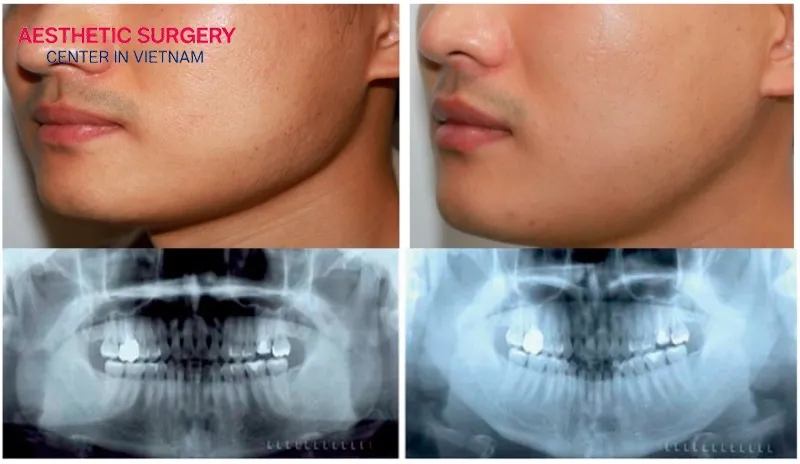
Cons
Although generally safe, mandibular angle reduction is still an invasive bone surgery that carries potential risks such as infection, facial nerve injury, or facial asymmetry if performed by an inexperienced surgeon.
In addition, the initial recovery period can last from 1 to 3 months, with swelling, bruising, and temporary difficulty in chewing—requiring strict post-operative care and dietary restrictions. In rare cases, excessive bone removal without proper muscle support may lead to muscle atrophy or skin sagging.
Furthermore, while the cost of jaw reduction surgery in Vietnam is considered reasonable, it typically ranges from 3,000 to 6,000 USD, excluding travel and post-surgery care expenses for international patients.
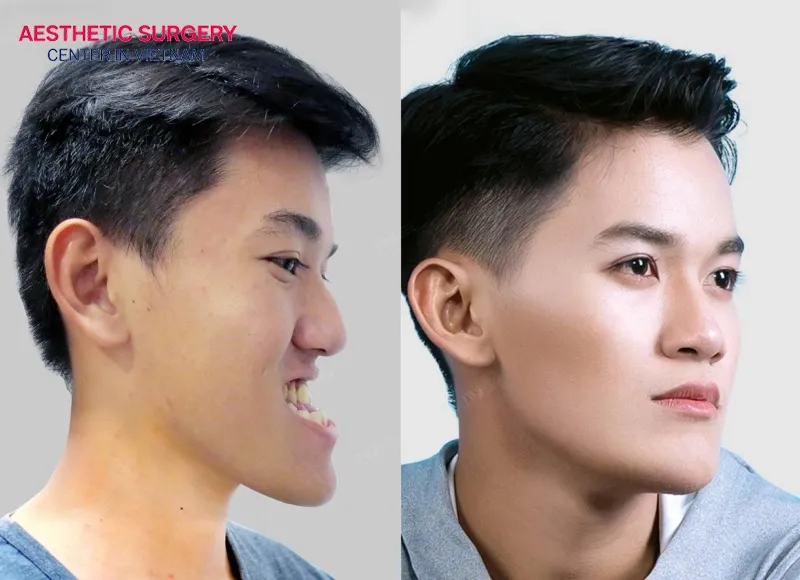
Who should and should not have mandibular angle reduction?
It’s important to understand whether your physical condition and jaw structure are truly suitable for surgery. This is a crucial factor to ensure the procedure is performed safely and successfully.
Who should consider mandibular angle reduction?
If you have a naturally wide, square jawline or enlarged masseter muscles that make your face appear broad or masculine, this procedure can be an effective solution.
The ideal age range for surgery is typically between 20 and 45 years old. Candidates should also be in good health, non-smokers, and free from serious medical conditions.
If you’re looking for a destination where you can combine travel with cosmetic enhancement at only one-third to half the cost compared to Korea or the U.S., Vietnam is the perfect choice.

Who should avoid mandibular angle reduction surgery?
- Individuals under 18 years old (as the jawbone is not fully developed).
- Pregnant or breastfeeding women.
- Patients with bleeding disorders, uncontrolled diabetes, or severe osteoporosis.
- Those who are afraid of invasive surgery or unable to rest for 7–10 days after the procedure.
- Cases where a square jawline is caused by excess fat rather than bone should consider liposuction or fat-dissolving injections first.
For safety reasons, it’s essential to have a panoramic X-ray and 3D CT scan before deciding on surgery. This allows surgeons to accurately assess bone thickness and nerve position.
How much mandibular angle reduction surgery costs?
The cost of mandibular angle reduction surgery in Vietnam typically ranges from 70–150 million VND (about 3,000–6,500 USD), depending on factors such as the technique used (basic bone cutting or combined 3D bone shaving), surgeon expertise, clinic, and additional services like 3D CT scans, anesthesia, and post-operative care. This price is significantly lower than in Korea (10,000–20,000 USD) or the U.S. (15,000–25,000 USD), making Vietnam an attractive destination for international patients.
However, this price does not include the initial consultation fee (around 500,000–1,000,000 VND) or post-operative accommodation. For an accurate quote, you should consult directly with a surgeon using 3D imaging, as each person’s anatomy is different. Therefore, research carefully and choose a facility licensed by the Ministry of Health to ensure safety and natural results.
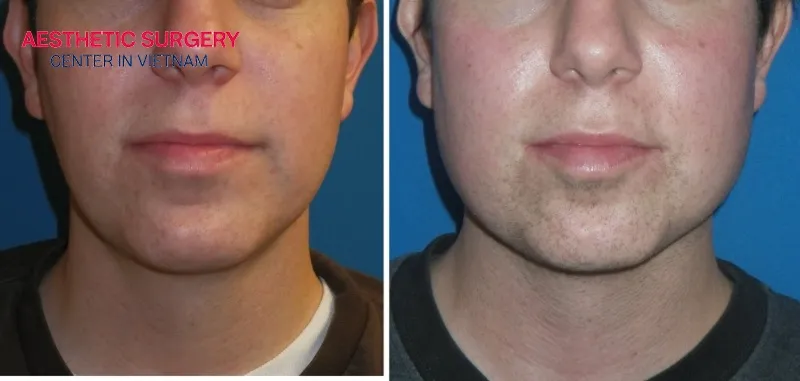
Mandibular angle reduction procedure
Mandibular angle reduction surgery is performed following a 6-step international standard procedure, lasting about 1.5–3 hours under general anesthesia to ensure a completely painless experience. Below is a clear and detailed overview of the process to help you better understand each step:
Step 1: Consultation & imaging diagnosis (30–60 minutes)
- The surgeon conducts a general examination, measuring the jaw angle and bone thickness.
- A 3D CT scan and panoramic X-ray are taken to create a 3D facial model, identify the location of the mental nerve, and determine the amount of bone to be trimmed or shaved.
- The personalized V-line contour is then designed using Vectra 3D software.
Step 2: Pre-surgery health check (1 day before)
- Blood tests, cardiac and coagulation examinations are performed.
- Stop taking blood-thinning medications (such as aspirin or vitamin E) 7–10 days before surgery.
Step 3: Surgery Day
- Endotracheal anesthesia is performed by a specialized anesthesiologist.
- An incision is made inside the mouth (leaving no external scars), and the muscle is carefully dissected to expose the jawbone.
- The mandibular angle bone is cut or shaved using ultrasonic (piezo) or microsaw instruments, with temperature control to minimize tissue damage.
- The jawline is then reshaped and fixed with ultra-small titanium screws (absorbable or removable after 6 months if needed).
- Aesthetic suturing is done using dissolvable stitches.
Step 4: Immediate post-operative care (Recovery room – 1–2 hours)
- Cold compression is applied to reduce swelling.
- Blood pressure, IV fluids, and preventive antibiotics are carefully monitored and administered.
Step 5: Care during the first 1–7 days
- Patients usually stay in the hospital for one night (or may be discharged the same day for minor cases).
- Follow a liquid diet, rinse with saline solution, and apply cold compresses during the first 48 hours.
- Take prescribed painkillers, antibiotics, and anti-swelling medication for 5–7 days.
Step 6: Follow-up and recovery
- Suture removal (if applicable): Day 7.
- CT scan check-ups: at 1, 3, and 6 months.
- Full recovery: 3–6 months (about 80% of swelling subsides after 2 weeks, and bone stabilizes after 3 months).
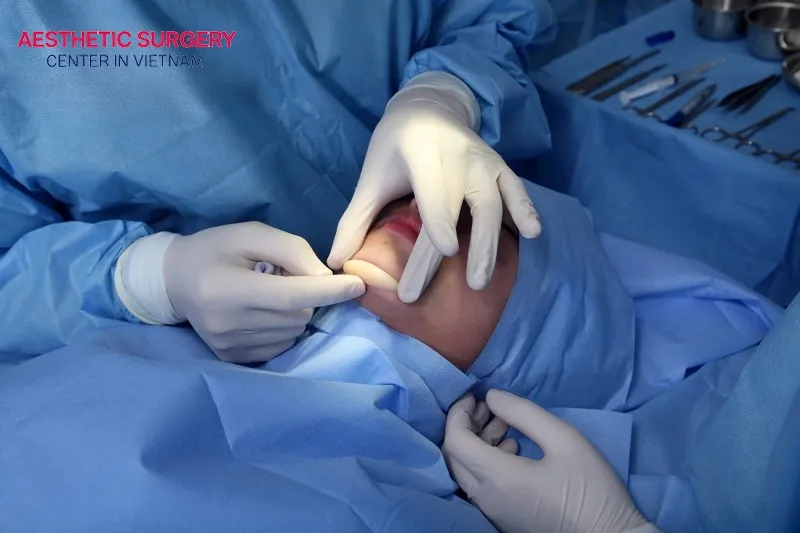
Is angle reduction surgery painful?
As mentioned in the mandibular angle reduction procedure, you will be under deep sleep for about 1.5 to 3 hours under general endotracheal anesthesia, ensuring that you feel no pain during the surgery. Modern anesthesia technology also allows for faster recovery and minimizes postoperative nausea.
During the First 1–7 Days After Surgery
You may experience mild to moderate pain, along with a feeling of tightness or soreness similar to that after wisdom tooth extraction. During this period, it’s important to take painkillers, antibiotics, anti-inflammatory, and anti-swelling medications as prescribed. Cold compresses and facial bandages can also help relieve discomfort.
From the Second Week Onward
At this stage, you might feel slight numbness or tingling around the chin area as the nerves gradually recover. Pain medication is usually no longer needed once you reach this phase.
Mandibular angle reduction before and after
To help you visualize the results more clearly, the following before-and-after photos will serve as the most convincing evidence. Let’s take a look!




Mandibular angle reduction address in Vietnam
It’s clear that choosing a reputable clinic for mandibular angle reduction surgery plays a crucial role in ensuring both safety and successful results. Aesthetic Surgery Center is one of the top choices for those visiting Vietnam for cosmetic enhancement. The center features a team of highly experienced and dedicated surgeons, internationally trained in the U.S. and Korea, delivering naturally beautiful and safe V-line results. Equipped with modern, luxurious facilities and JCI-standard sterile operating rooms, along with private post-operative recovery areas, the center provides a truly relaxing experience.
Its customer care service stands out with a professional multilingual consulting team offering personalized treatment plans and 24/7 follow-up support. Notably, the center also provides complimentary airport pickup and luxury hotel arrangements, ensuring a worry-free recovery. With prices starting from only 70 million VND, Aesthetic Surgery Center offers not just exceptional aesthetic results but also a world-class beauty experience.
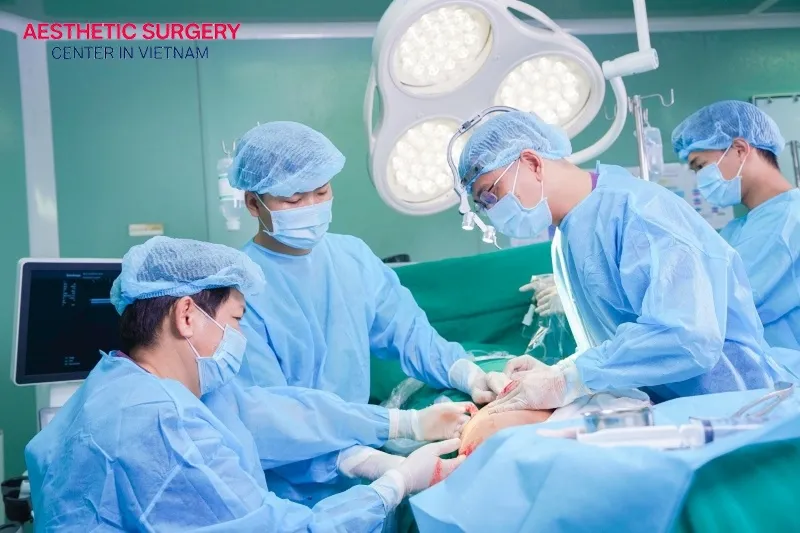
Frequently asked questions
Here are some of the most frequently asked questions from international visitors considering mandibular angle reduction surgery in Vietnam. Take a look to learn more!
Will insurance cover jaw reduction?
Mandibular angle reduction surgery is classified as an elective cosmetic procedure, so most international and Vietnamese health insurance plans do not cover the main surgical costs. However, certain premium plans such as Aetna International or IMG Global may reimburse part of the anesthesia or post-operative care expenses if a valid medical reason is provided (for example, mandibular hypertrophy causing temporomandibular joint pain).
You’ll need to submit pre-surgery documentation (including 3D CT scans and a surgeon’s report) at least 30 days in advance. Some international clinics can assist with preparing the necessary paperwork to help you claim partial reimbursement if your insurance provider approves it.
What is the best age for jaw reduction?
The ideal age range for mandibular angle reduction surgery is between 20 and 40 years old, when the jawbone is fully developed (after age 18) and the skin still maintains good elasticity—ensuring natural V-line results with minimal sagging. From ages 20–30, recovery is fastest (about 80% of swelling subsides within 10 days), and bone contouring is easier to shape.
From ages 30–40, it’s recommended to combine the procedure with muscle lifting if the skin shows early signs of aging. Those over 45 can still undergo the surgery but should have their bone density and skin elasticity evaluated via 3D CT scan; complementary treatments such as HIFU or thread lifting may also be advised.
Does jaw reduction cause sagging?
In fact, mandibular angle reduction surgery does not cause sagging when performed with proper technique and when the surgeon preserves the masseter muscle and jaw ligaments. Modern methods in Vietnam use intraoral bone-cutting techniques that maintain the muscle and ligament structure, allowing the skin to naturally retract and adapt to the new jawline. While sagging can occur, it is rare and usually happens only when too much bone is removed or in patients over 45 with preexisting skin laxity.
Mandibular angle reduction is not just a procedure to enhance appearance—it’s a journey toward greater confidence and self-satisfaction. With advanced technology, reasonable costs, and world-class medical services in Vietnam, you can achieve the elegant, natural V-line contour you’ve always desired. Wishing you confidence and happiness in your new look!






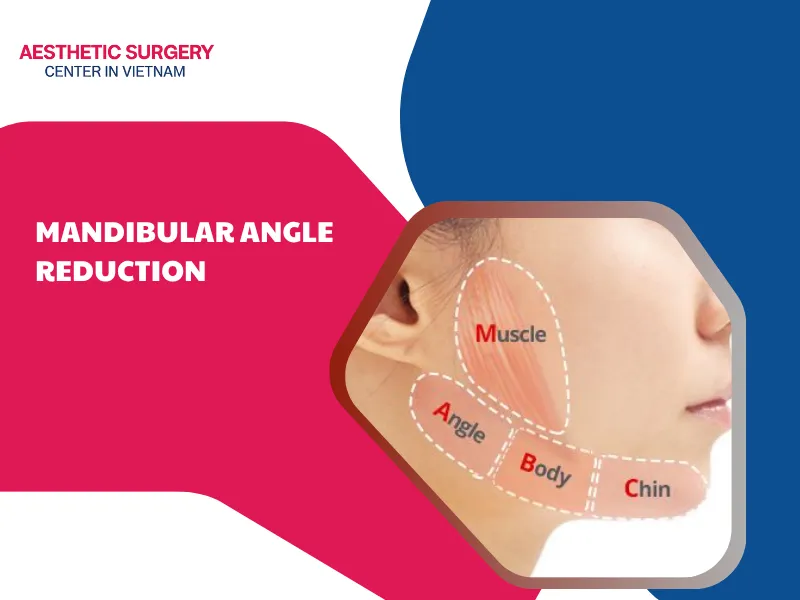
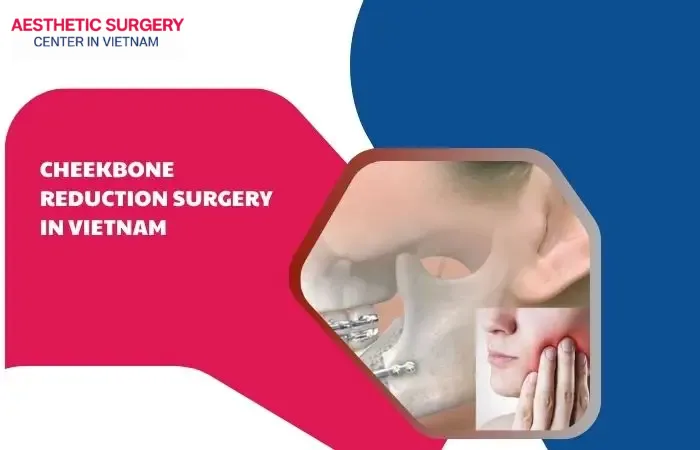




Comment on the post